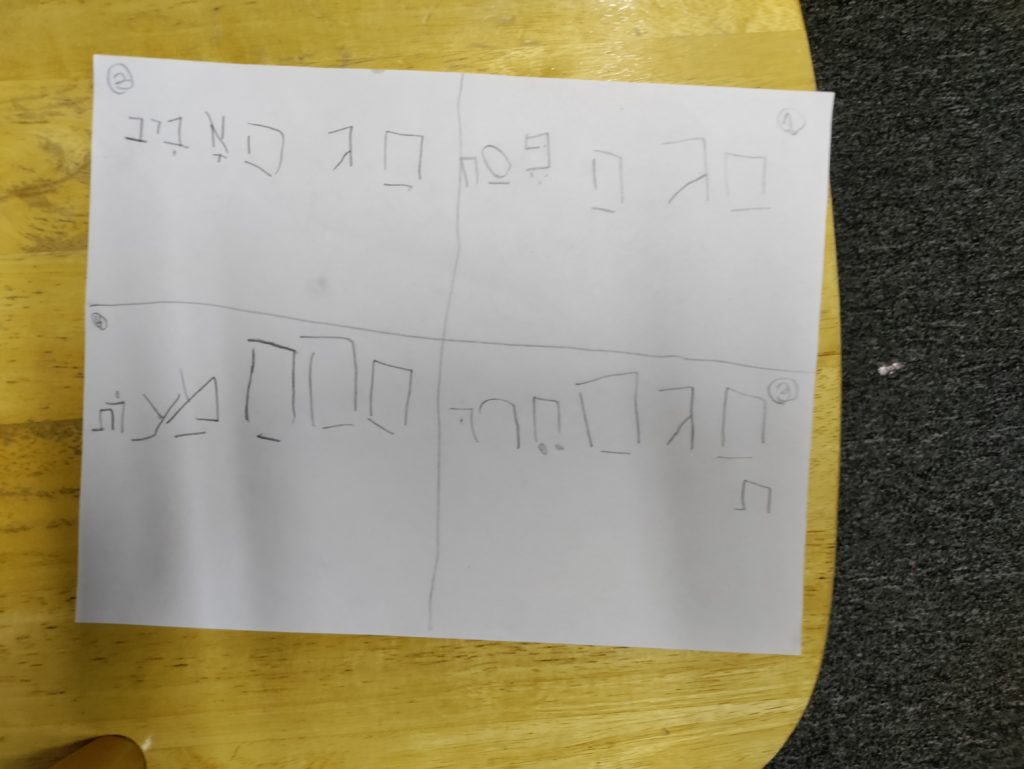When I was cleaning and decluttering in preparation for Pesach, I came across a paper on which my son had written four of the Hebrew names by which Passover is known. If I recall correctly, this was an assignment he completed during virtual schooling in the weeks before Passover 2020, when he was in first grade.

The names of the holiday include: Chag HaPesach (the most common name for the holiday, which refers to the korban Pesach, Paschal lamb, that was offered on the eve of the holiday when the Temple stood), Chag HaMatzos (the festival of unleavened bread), Chag HaAviv (the festival of spring), and Chag HaCherut (the festival of freedom).
Passover is not the only Jewish holiday which is known by multiple names. For example, Rosh Hashanah, the Jewish New Year, is also known as Yom Teruah (day of sounding the shofar) and Yom HaDin (the day of judgment), among other names.
The multiple names result both from different contexts in which the holidays are mentioned in Tanach (the Hebrew Bible) and other traditional sources, and also express different aspects of how we observe and think about the holidays.
When it comes to Passover, one of the first things we think about, after all, is how differently we eat during these eight days. Matzah becomes the main staple of our diets, making the name Festival of Unleavened Bread particularly apropos. On the other hand, the Festival of Freedom more accurately reflects the meaning behind the holiday, as it celebrates the liberation of the Jewish people from Egyptian slavery.
I have always found particular enjoyment in the fact that Passover is the festival of spring. I love it that the natural world bursts into bloom at this time of year, and that by observing the holiday, we have the opportunity to pause from our regular schedules and bask in the change of seasons. In years like this one, when the weather is primarily overcast and cold, I find myself fighting a sense of disappointment. However, I try to focus on the few days that have been sunny and clear, and on the many spring flowers that are persistently blooming, even when they are showered by a “wintry mix.”
If I could add one more name to Pesach, it would be Chag HaMishpacha, the festival of family. For so many Jews, even if they are not particularly observant of Jewish law, Pesach is a time for gathering together for seders (the ritual meals on the first and second nights of Passover). After two years in which we held seders with just our immediate family, we were fortunate this year to have some of our extended family with us to celebrate once again. Being together added a dimension of warmth and celebration that we had been missing for two years.
The Haggadah, the guidebook we use for the seder, speaks extensively about the importance of transmitting the story of the Exodus from Egypt from one generation to the next, to the point that we are supposed to view ourselves as if we had actually been physically present during the time of Moses. While a person can connect to this experience solely through study and imagination, it was clearly the intention of the rabbis who composed the Haggadah for seder participants to connect to the Exodus through the guidance of their elders.
Inevitably, at a seder in which there are participants from multiple generations, an older relative will talk about something that was done, or said, or eaten at a seder in their distant memory. As we sit around our tables laden with matzah and wine, we are linking ourselves to seder tables from time immemorial, all the way back to the Exodus itself. It is a festival of family, and of continuity, just as much as it is a festival of matzah or freedom.
And so, I am saving my son’s first grade assignment to continue reminding myself of the many aspects of Passover and of how, with his rudimentary Hebrew handwriting, he is forming his own link in the tale of our nation’s redemption.
Follow Susan Jablow